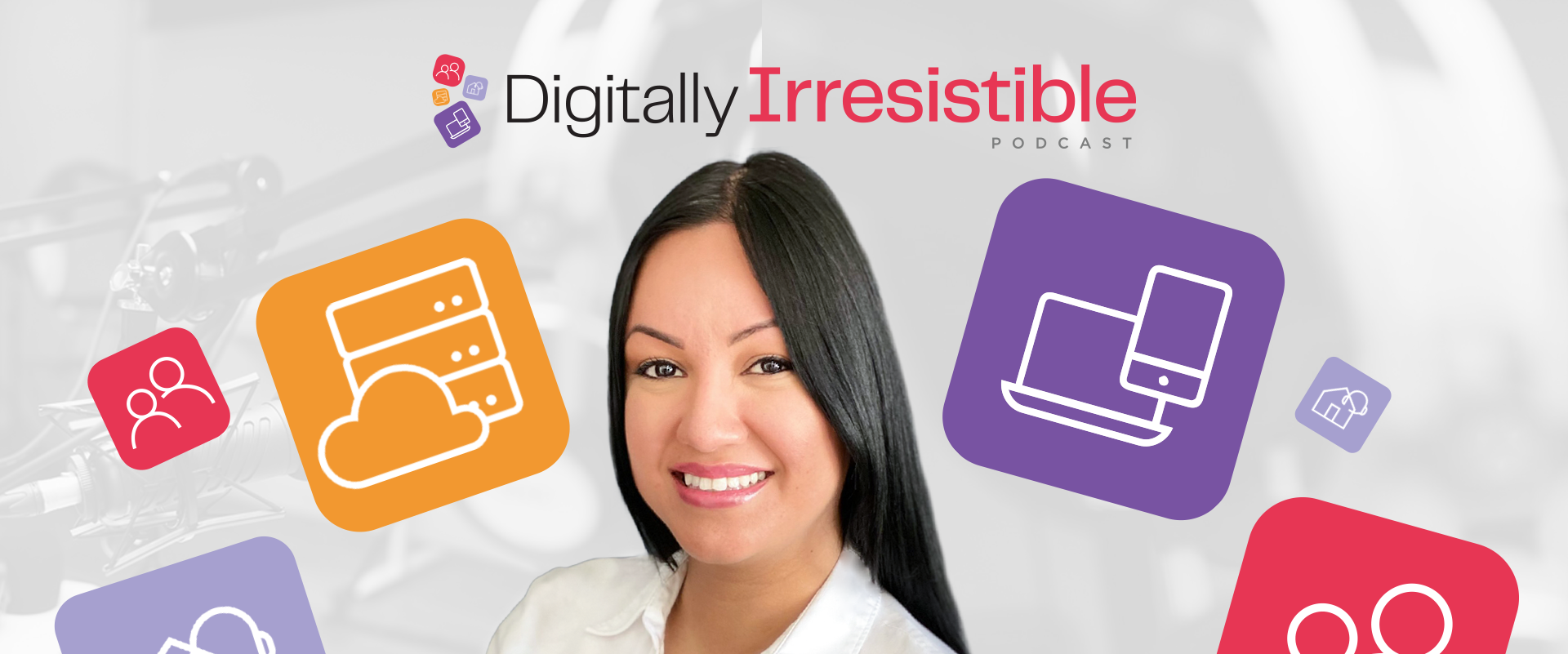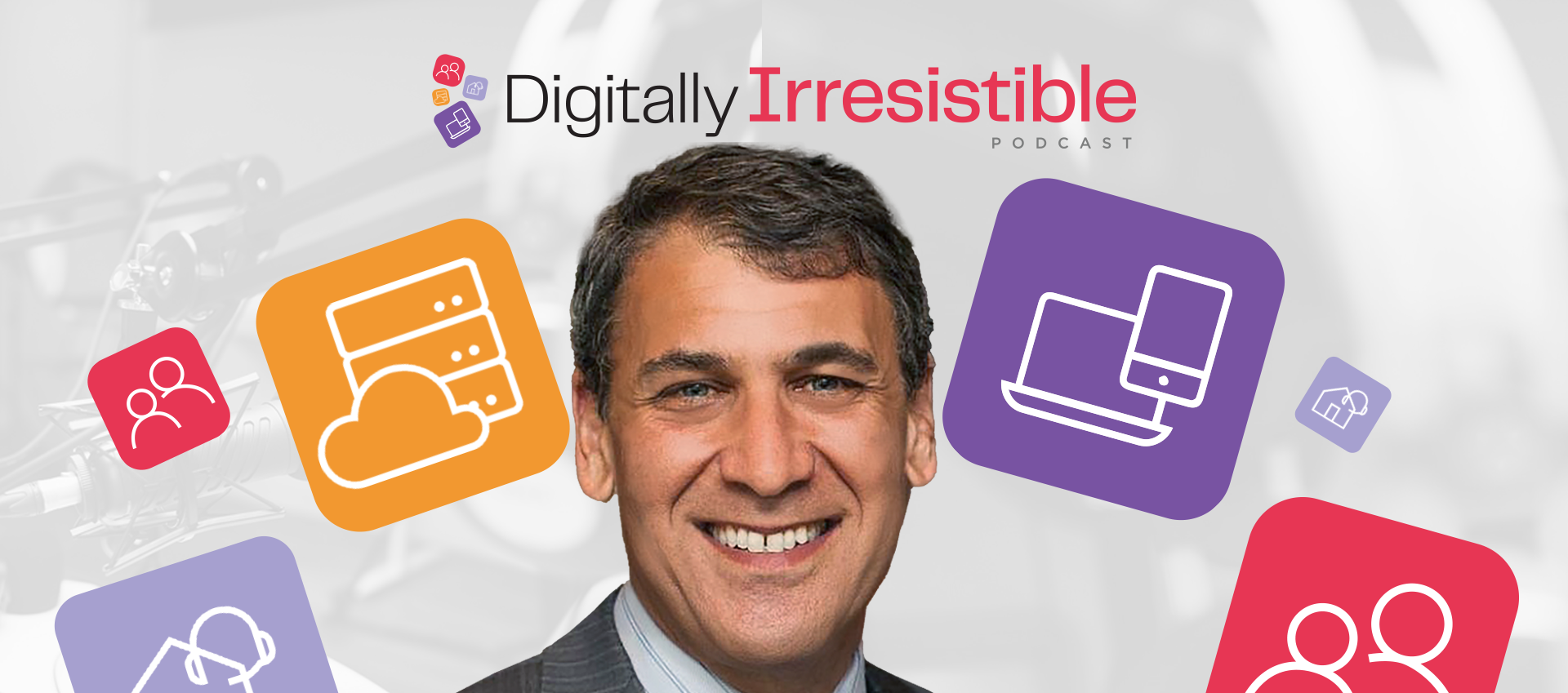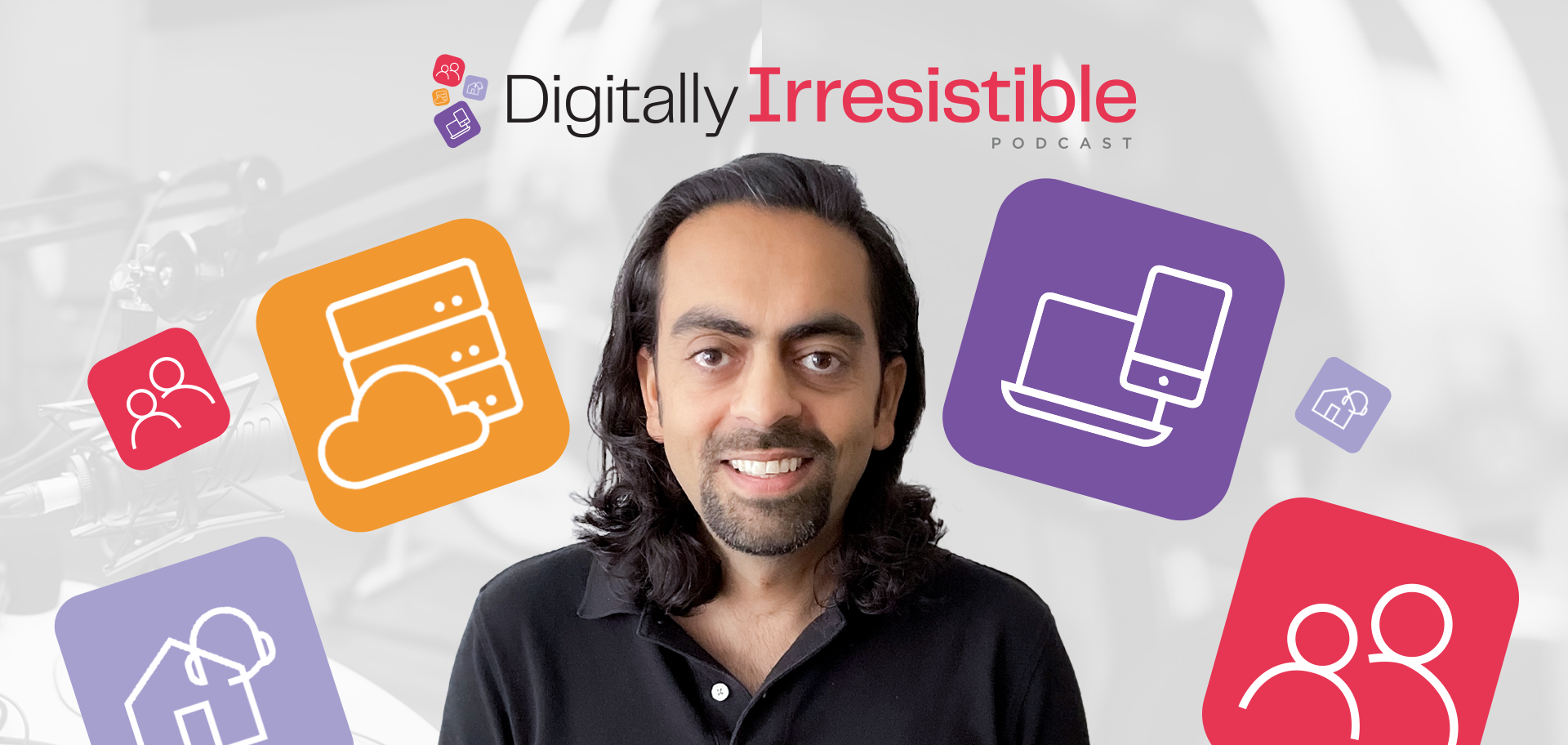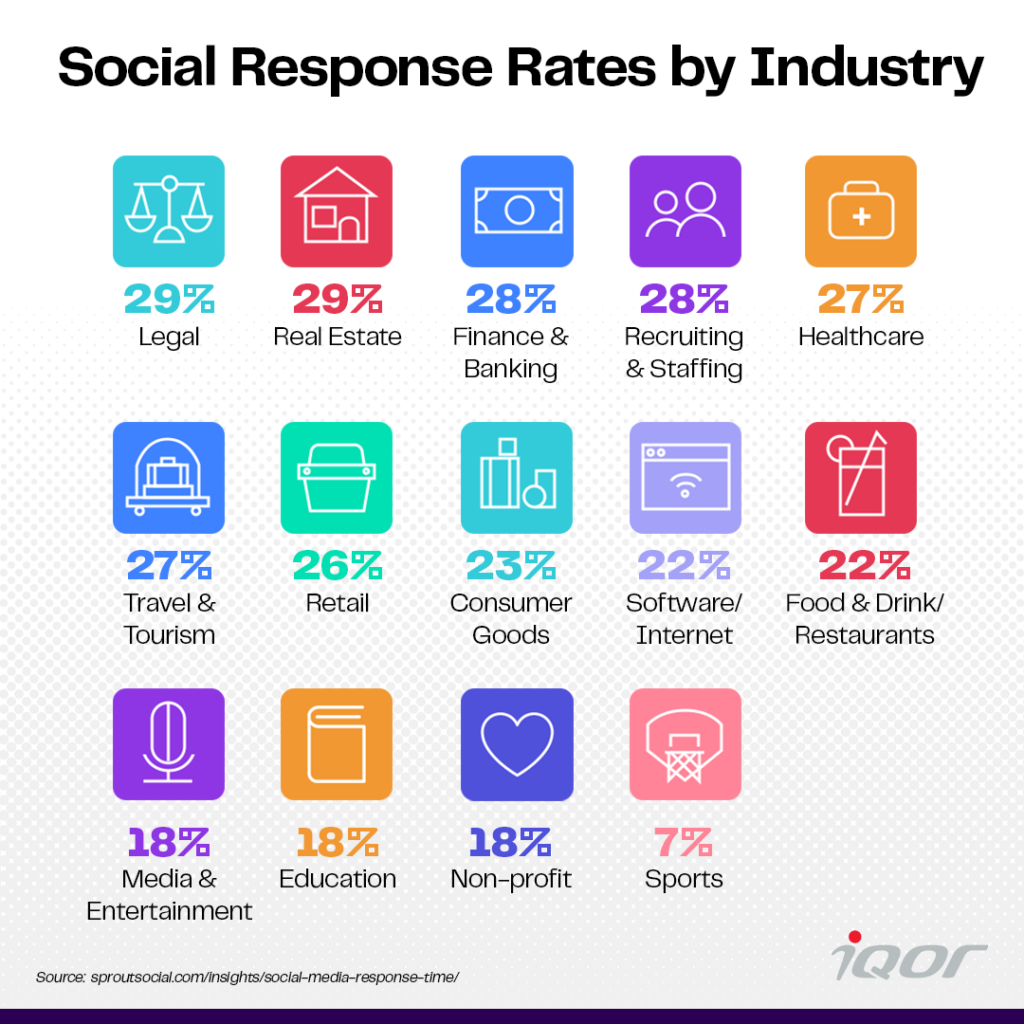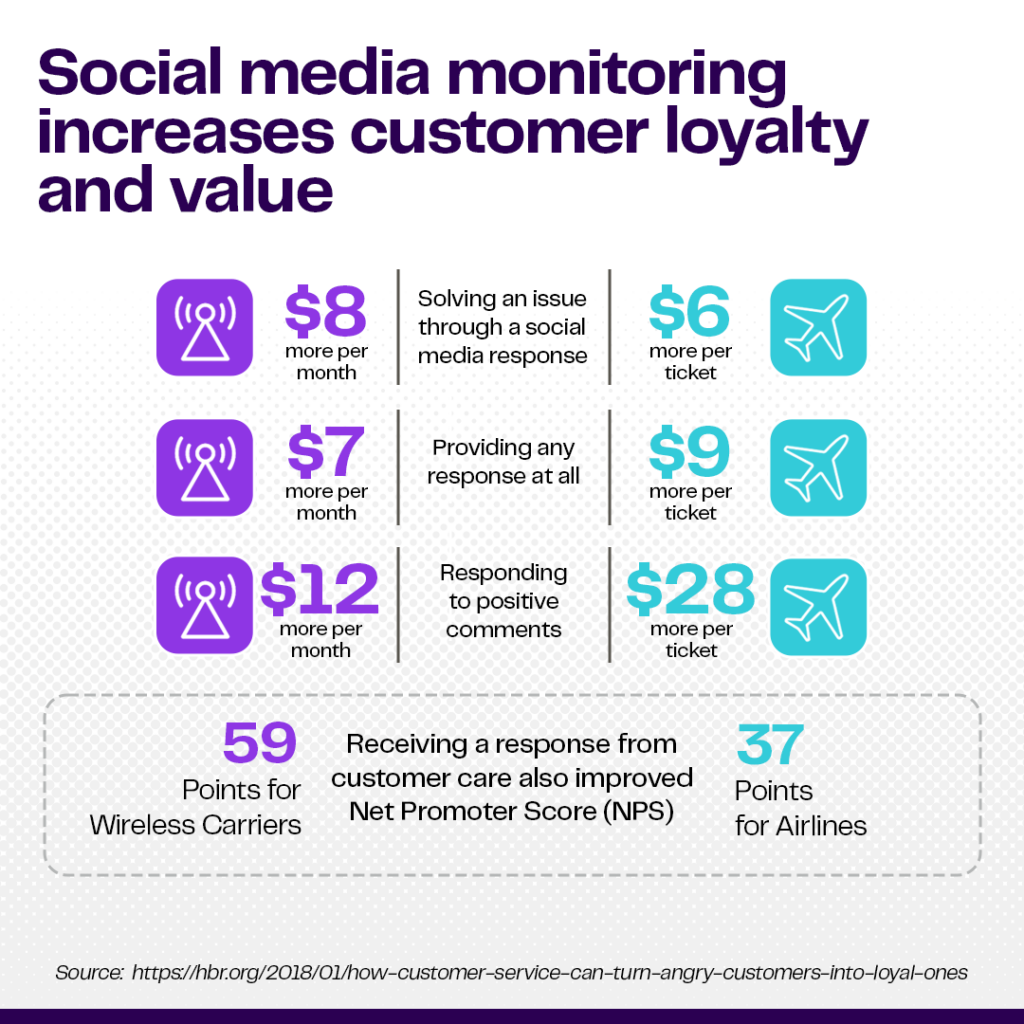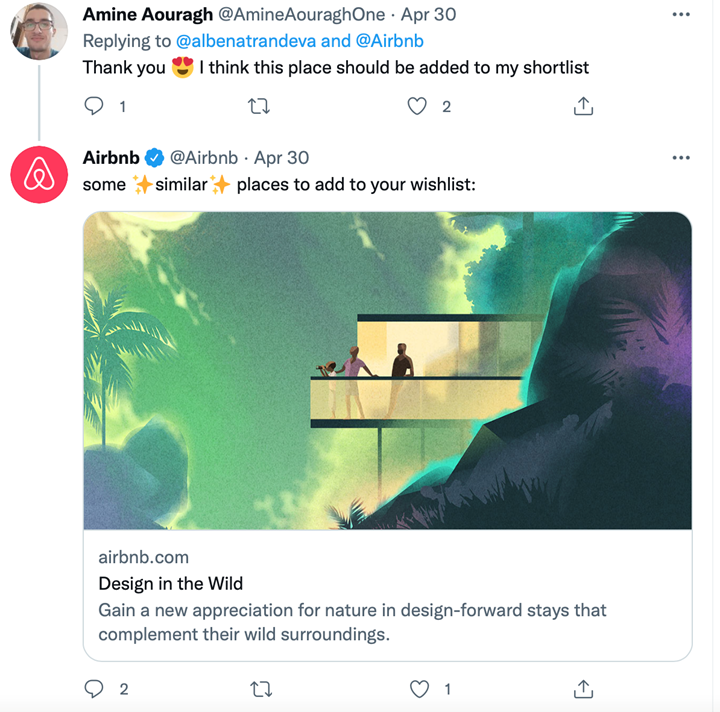Designing the Digital Customer Experience Within Your Digital Transformation Strategy
Digital transformation is the purposeful integration of technology into all areas of your business. The digital customer experience (DCX) is one element of this transformation that generates a big impact on your business. Indeed, with clear leadership and consistent vision, digital transformation can improve efficiencies and experiences with your brand in today’s digital economy. The digital customer experience is foundational to digital transformation strategies with these common elements:
- Customer experience.
- Operational agility.
- Culture and leadership.
- Workforce enablement.
- Digital technology integration.
In this post, we focus on the digital customer experience component of a comprehensive digital transformation strategy. Digital CX is the sum total of all online interactions a customer has with your brand and how those interactions make them feel about your brand. It could be exclusive to your company website, but often the experience also includes mobile apps, chatbots, social media, email, and any other digital customer touchpoints you employ. All of these elements work in unison to create the overall experience customers have with your brand.
That experience is valuable to you. It defines how likely customers are to turn to you when they need a product or service like yours, if they will tell others about you, and if they will leave a positive online review. Your business is made up of a multitude of elements that together influence your customers’ experiences one way or the other: website, product and service offerings, pricing model, marketing campaigns, customer support, billing, collection and more are all vital parts of the customer experience.
As your business continues to evolve and incorporate new technologies, implementing the right digital customer experience strategy for your brand will grow more important. In fact, Gartner predicts that 70% of customer interactions will involve emerging technologies this year. Digital technology can improve your brand’s ability to understand and serve its customers, but the customer experience is a human experience and the essence of human connectivity should remain at the heart of every customer interaction.
Why Is the Digital Customer Experience So Important?
With CX driving over two-thirds of customer loyalty (more than brand and price combined), it has an enormous impact on the growth potential of your business. In the digital age, more and more customers expect to access your customer support services across a variety of digital platforms. The digital customer experience is about creating smiles through frictionless virtual interactions at each step of the journey.
Digital CX is the greatest opportunity for engagement, advocacy, acquisition, and retention. It is increasingly important in the midst of changing preferences and expectations due to COVD-19. In fact, the top 5% of brands that scored the highest across industries on Forrester’s U.S. 2021 Customer Experience Index adjusted their DCX strategy during the pandemic to meet core customer needs. They outperformed other brands in effectiveness and ease to create enjoyable customer experiences that generated more goodwill towards their brands.
With so many touchpoints through which you can offer your product or service, it’s crucial that you strategize early on about how best to execute a CX strategy that integrates them all effectively. But what exactly does it mean for brands today to have an effective digital CX strategy?
In practice, digital customer experience strategies are both data- and people-driven. The whole point of digital CX is to provide customers with more choice, greater convenience, and speed while maintaining the human touch so customers feel appreciated. Data helps you do that by providing insight into how customers are interacting with your brand as well as why they aren’t choosing to do so at certain times or in certain ways.
When the data shows unwelcome trends cropping up in the customer journey, you can use it to develop strategies for optimizing the digital touchpoints that contribute to the gap. Data helps you prioritize mission-critical tasks and leave less important optimizations for later. It can also help you identify and modify or eliminate digital optimizations that don’t produce positive outcomes for the customer. Ensuring these positive outcomes is essential to prevent customer churn. According to customer experience research by PwC, even when customers in the U.S. have positive impressions of a company or product, 59% will walk away after several bad experiences and 17% will leave after one bad experience.
Digital Customer Experiences Improve Your Relationships With Customers
Digital transformation means modernizing every aspect of your business, starting with customer interactions. You can accomplish this by providing new digital customer service options that better connect you with customers and improve their overall experience while maintaining a consistent and clear brand voice across channels.
Chatbots and other artificial intelligence-powered technologies (AI) can play a key role in the digital customer experience. The point is not to remove the human customer service agent from the customer journey entirely. Rather, AI offers an opportunity to empower agents to focus their attention on higher-value tasks—not frequently asked questions that can be adequately handled by digital customer service solutions that extend beyond your company’s knowledge base. Hybrid human and AI-enabled contact centers, for example, can greatly improve the speed, efficiency, and satisfaction of customer interactions. To this end, Juniper research forecasts that this year chatbots will provide an annual savings of more than $8 billion across industries.
In the retail industry alone, brands are harnessing the competitive advantages of AI to automate time-consuming, routine tasks and increase operational efficiencies. The adaptive and time-saving features of chatbots have led about 80% of brands globally to use chatbots or plan to use them in the future. Their uses extend beyond answering customer questions to engage consumers and provide personalized service as well. Retailers are innovating the use of AI to improve customer experiences in a multitude of ways, from customized recommendations and personalized digital product displays to auto-generated shopping lists and digital support to answer customer questions while in the store.
At iQor, we create personalized experiences like these through a combination of digital technology solutions and contact center agents. We foster amazing human-centered digital customer experiences around the globe to provide a faster and more efficient service across multiple digital channels on behalf of our clients spanning industries such as healthcare, telecom, retail, insurance, energy, banking, and others. Our contact center agents are efficient and happy because our digital transformation model integrates internal or third-party data sources along with an AI infrastructure to rapidly feed information to our human agents on the frontline of customer support. With this model, easy, frequent tasks are resolved faster, while more complicated problems are handled by human agents. The result is a more cost-effective customer experience model with happy agents and most importantly, satisfied customers.
Digital Customer Experiences Improve Efficiencies
Today’s consumer wants to access your customer service options through the digital channel of their choice, and they will do so at all hours of the day. Many companies have a global customer base, which makes it necessary to serve customers across all time zones at scale.
Digital transformation is your commitment to revolutionize the digital customer experience allowing you to fulfill customer expectations at every stage of the customer journey, resulting in enhanced brand loyalty and immense productivity benefits. At a high level, your digital transformation strategy needs these four basic elements for an optimized DCX:
- Understand the evolving needs of your customers.
- Enable customers to engage with you easily on digital channels of their choice.
- Respond to and resolve customer inquiries quickly.
- Integrate human-centric support with digital support.
It’s essential that your digital customer experience is as frictionless as possible. Done right, your digital transformation strategy empowers you to deliver greater speed and convenience to your customers. You can also scale it as you grow, which is your reward for providing an outstanding customer journey. For example, a retail client is able to scale their customer service during peak seasons by 750%.
Digital transformation will make your organization more productive and help drive customer loyalty. Many customer inquiries can be resolved through digital technologies such as interactive voice response (IVR) that can provide quick and convenient answers to simple questions like “what is the status of my order?” A digital customer experience lets customers self-serve issues on their own with ease. Once they receive an answer to their question or complete their transaction, they’re more likely to be a satisfied customer, increasing their loyalty and your ability to sell more or earn a referral.
The Benefits of Integrating Data Into the Digital Customer Experience
The two cornerstones of data integration in the digital customer experience are analytics and insights. While analytics lets you identify patterns in need of optimization, insights point to actual customer behaviors and trends in real-time. As a result, you’ll be better prepared to make decisions about how to optimize your customer experience.
Data integration, analytics, and insights help you quickly identify trends and obstacles in your customer experience journey. Once you’ve identified them, you can decide how best to prioritize areas of improvement to maximize their impact on customer satisfaction. iQor, for example, utilizes a unified workforce management (WFM) solution to reduce labor waste through intelligent forecasting and scheduling while eliminating mundane tasks and enabling agents to focus on value-added tasks for meaningful customer engagements with more timely results.
Data integration into the digital customer experience allows you to:
- Deliver targeted and relevant content to customers at just the right moment.
- Create a continuous customer experience across all media channels and touchpoints.
- Keep an up-to-date profile for each customer, so that you know their history and can predict their future needs.
- Resolve questions and complaints faster while enhancing customer satisfaction.
Why a Digital Customer Experience Is Imperative
From requesting a quote or paying a bill to signing up for a service, we live in an increasingly digital world; offering your customers speed and convenience through multiple channels will advance your brand’s reputation. Now more than ever, companies must optimize the digital customer experience to meet and exceed customer expectations.
The Digital Customer Experience Improves Outcomes
The pillars of digital customer experience management are intelligent automation, digitization of CX infrastructure, and improved customer service agent interactions. An effective digital transformation strategy simplifies the customer experience at every turn. For example, call deflection using intelligent chatbots can save time and money while providing a great customer experience at virtually any time of day, for any time zone.
The digital customer experience is all about streamlining processes to create a smooth and convenient journey for customers. They must be able to find what they need, when they need it, without having to jump through unnecessary hoops. Thanks to business intelligence powered by data, you’re able to predict customer needs and wants better than ever before and use that data to optimize results.
This streamlined approach is not just a matter of convenience. By providing omnichannel marketing and digital interaction, brands can attract new customers while keeping current ones. If consumers engage with a brand’s marketing through their preferred channel, they should also be able to interact with the brand through their chosen channel for customer service. Ultimately, the path to satisfied customers (and more business) centers on making the journey as efficient as possible—digital customer experience management provides the means to do just that.
Digital Solutions to Streamline Customer Experiences
The digital customer experience paradigm requires businesses to step up their game to deliver an empowered customer journey across all digital channels relevant to their customer base. One of the best ways to impact the customer experience is by closely monitoring and proactively responding to what customers say about your brand or products across social media platforms like Facebook, Twitter, Instagram, YouTube, and TikTok.
How exactly do you do this?
It’s no secret that consumers are active on social media. Customer care agents can monitor a diverse range of digital channels to derive insight into customer needs and expectations. Your agents can answer questions, respond to complaints, and redirect customer comments to the relevant support channels.
Social media monitoring can improve customer satisfaction and elevate the reputation of your brand. For example, a telecom provider ramped up their social media support by 400%, jumping from 10 to 40 specialized agents to support new promotional programs. iQor trained experienced agents to maximize their impact on Facebook, Twitter, and Instagram while utilizing digital social media monitoring solutions to streamline their responses at scale. Agents outperformed their 6-minute response time SLA, averaging 5.3 minutes per response, while also nearly doubling net promoter scores (NPS). Instead of focusing on concurrence (measuring how many conversations an agent can handle at once), overall customer experience and satisfaction served as the primary metric because of the increased exposure social media affords.
But social media monitoring is just one possibility. You can also use automation to send out personalized thank you messages to your customers or in some cases use face-to-face teleconferencing to interact with a customer directly. Contemporary customer communications technology enables you to engage your customers and enhance their experiences in as many ways as you can imagine.
Choosing among various digital solutions that could improve the customer experience depends largely on your industry. The key is to use data to determine the best ways of connecting with customers on their terms.
How to Optimize Digital Solutions for the Best Customer Experience
Optimizing the digital customer experience is an ongoing and ever-evolving endeavor. There will always be opportunities to ensure your omnichannel customer experience options are available in an intuitive, hassle-free interface that’s fast and easy to use. Just because your customer services are accessible during normal operating hours doesn’t mean they’ll work the same way outside of business hours. In fact, sudden surges of customer interest have the potential to overwhelm any of your digital channels if their infrastructure isn’t optimized.
In particular, data can help you identify areas for improvement in your digital customer experience offerings. Every digital marketing experience you create can provoke a customer response, be it impressions, clicks, or conversions. As customers interact with your brand, their encounters will be logged in your system as customer data, allowing you to build up a repository of information and insights about customer support questions and resolutions. This provides an excellent source of data that you can mine for long-term business advantages. Assessing value-added service offerings to determine where else you can provide efficiencies, increase customer satisfaction, or improve employee retention and engagement facilitates the continuous improvement of customer experiences.
Some of the key standards to use when measuring the effectiveness of digital solutions for customer experience management are:
- Convenience
- Customizability
- Performance
- Omnichannel availability
At iQor, we deploy digitally-enabled intelligent technology that meets these standards and empowers agents to elevate customer experiences. Our unified omnichannel CRM provides a 360-degree view of the customer and their interactions, allowing agents to deliver highly personalized, seamless, and efficient resolutions to create a consistent brand experience.
iQor’s Unified Desktop technology bundles multiple applications, tools, and screens into one simple user interface regardless of the media type. Seeing only the necessary scripts and customer interaction history, agents can more easily provide fast, efficient, and exceptional service.
We also use real-time AI that mimics human perception to detect speech patterns, tone, dead air, and word choices. It provides agents with immediate digital alerts or recommendations so they can respond to customers with a higher degree of empathy. Without engaging a live supervisor, AI coaching provides emotional intelligence to take CX to the next level.
In sum, proper DCX needs to meet customers where they are, at any time of day. You’ll need to analyze which digital channels are most effective for your business, such as your website, social media platforms, mobile apps, etc., and adapt your customer experience options accordingly. Maintaining up-to-date CX technology infrastructure that operates at high availability in response to customer requests is necessary for an optimized digital customer experience.
How to Keep Data Secure Off-Site and in the Office
The shift to digital channels has made customer experiences more convenient while simultaneously leading companies to take a more comprehensive approach to cybersecurity. With global malware attacks on the rise, remote workers logging in from more endpoints, and customers buying and interacting in new ways, businesses must extend their endpoint protections to reduce risk. John O’Malley, senior vice president of platforms and desktops at iQor, recently wrote about the importance of a comprehensive work-at-home endpoint security ecosystem for globally distributed access points. This is one of the multiple layers we employ to provide world-class security for our clients.
Investing in and maintaining cybersecurity infrastructure promotes better customer experiences, improved trust and loyalty, and protects your brand reputation. One way of accomplishing this in today’s landscape is through software specialized for remote work environments that enables BPOs to secure agents’ company-issued thin clients, PCs, or personal machines, at scale. iQor uses Secure Remote Worker (SRW) software to temporarily lock access to personal programs on work-at-home agents’ personal devices while providing access to the same secure cloud environment they use when onsite in support of the client’s customer experience program.
The Bottom Line
The digital customer experience is here to stay. Even if your business has a significant offline component, it is evident that digital customer interactions are rapidly outpacing offline ones in many industries. A total digital transformation of your customer experience is essential to help you keep pace as new technologies continue to evolve.
A successful digital CX strategy is one that accounts for all the customer experience variables relevant to your brand. These are not the same for every business, and you don’t have to do everything at once. Rather, examine your current customer experience options and look for touchpoints that can be optimized for digital, provided they improve the customer experience. With customer data and predictive analytics, you can refine your customer service options and provide a better experience for each customer while also creating a supportive environment for employees on the frontline serving your customers.
If you’re ready to take your digital customer experience to the next level, partner with iQor. We’re purpose-built to deliver the world’s most sought-after customer service. Learn more by listening to our podcasts. Schedule a call with a customer experience expert today to explore how we can help you create more smiles. Contact us here.





